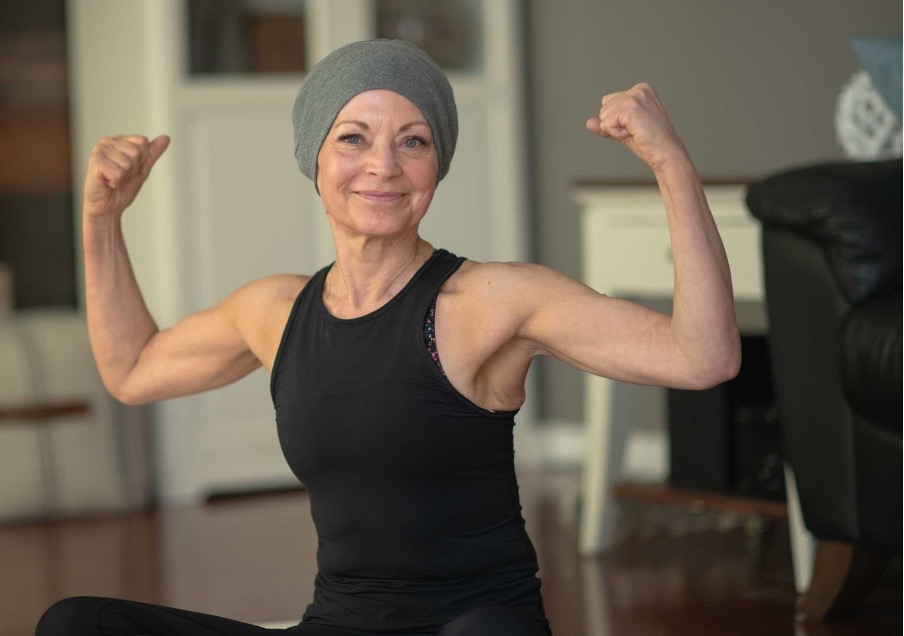Cancer treatments (see last weeks blog), such as surgery, radiation and chemotherapy, are life saving interventions which have indisputably extended the life expectancy and outcomes following a cancer diagnosis. The unfortunate truth however is that the health implications of cancer can hit you twice. If the initial diagnosis and the health changes resulting from the cancer weren’t enough, the second blow can come as a result of the side effects of the treatment! Sometimes these can even feel more limiting than the cancer itself.
For us exercise professionals working with the cancer cohort, we need to make changes to our exercise prescription to work around these secondary limitations. Providing our clients with a program that is safe and effective for them means that they can continue to reap the benefits of exercise despite the side effects. Exercise can in fact help to reduce some of the side effects, aid in recovery, and get them back to living their normal life again sooner (1).
For this week’s blog, we are just lightly touching on some of the things we look out for, and the modifications that we make, when prescribing exercise for cancer recovery.
Side Effects of Treatment
Note: Each of these paragraphs could really be expanded out into a blog of its own! Cancer related fatigue is common, so the majority of our cancer rehab programs are closely intertwined with our fatigue management approach. The mental health implications of cancer are also top of mind throughout our programs. Check out our previous blogs relating to Fatigue and Mental Health.
1. Lymphedema
Lymphedema presents as painful swelling that occurs when the circulation of lymph fluid is impaired. It is common following cancer treatment because the removal of lymph nodes during surgery, or damage to them from surgery and radiation, can cause lymph fluid to accumulate. It presents most frequently in the arms (breast cancer) and legs (pelvic / gynecologic cancers), but can occur elsewhere in the body also, such as the head and neck.
Exercise can help with lymphedema by encouraging the circulation of lymph fluid as the muscles contract and relax. Note that the majority of research has been done for arm lymphedema. Monitor for swelling or pain symptoms following exercise sessions, and regress volume or intensity if needed. Compression garments and positioning the body to assist with lymph fluid draining are also strategies that can help to minimise these effects (2).
2. Restricted range of motion
Another complication post surgery is the development of scar tissue at, or around, the area of tissue removal. A classic example of this is ‘cording’ (aka Axillary Web Syndrome) after a mastectomy or lymph node removal – where inflammation promotes the development of webs or cords of tightened, fibrous tissue under the armpit and along the arms. This can create pain and restrict range of motion, particularly for movements overhead.
Stretching and massage can help to lengthen and break up the scar tissue (3).

3. Widespread effects of chemotherapy
Unfortunately, chemotherapy affects all fast growing cells in the body – this is why people lose their hair following chemo! While most normal cells recover quickly, there are some cases where chemotherapy leaves a lasting impact.
Damage to the peripheral nervous system can affect the nerves at the hands and feet, causing pain, tingling, or loss of sensation. Be mindful of the risk of falls due to this loss of sensation at the feet – make sure that the exercise choice is low risk for falls. Balance training may also come in handy here.
Chemotherapy may also affect other organ systems (4), such as the digestive system, lungs, reproductive system, kidneys, and heart. We need to be mindful of any abnormal symptoms which may indicate changes elsewhere in the body, particularly with red flags relating to the heart during exercise.
4. Bone health and fracture risk
Those with bone metastasis (cancer affecting the bones) or who have received hormone treatments (which may influence bone health) are more at risk of bone fractures. Keep in mind that post-menopausal women are already predisposed to osteoporosis, so this may be escalated following certain treatments! Falls can be fatal for vulnerable bones. Again, avoid exercises which put people at risk of falls (such as running and mountain biking) and high impact activities (such as impact sports or box jumps).
5. Infection risk
People who have received immunotherapy treatments may have a compromised immune system, meaning that they are more likely to become unwell if they catch a bug or virus. The same is true after chemo and radiation, or following immuno-suppressants (i.e. after a bone marrow transplant) as the immune system is already working hard to recover from these treatments. For this reason, community spaces such as the pool or gym are best avoided at this time.
Exercise For Cancer Recovery
Despite these many challenges to navigate after cancer treatment, the recommendations are clear – avoid inactivity, and gradually build in more physical activity as you are able to.
Exercising before, throughout, and after treatment can help to manage some of these side effects – keeping you fitter, stronger, and healthier after your treatments.
Working with an exercise physiologist can make sure that your training time is both safe, and effective!
References:
- https://www.cancer.org/treatment/survivorship-during-and-after-treatment/be-healthy-after-treatment/physical-activity-and-the-cancer-patient
- https://www.cancerresearchuk.org/about-cancer/coping/physically/lymphoedema-and-cancer/treating/exercise
- Cording: a treatable complication of breast cancer surgery (Smith, 2019) – https://bjgp.org/content/69/685/395
- https://www.cancer.org/treatment/treatments-and-side-effects/treatment-types/chemotherapy/chemotherapy-side-effects.html
Author: Yolanda van Vugt Editor: Tessa Nielsen Clinical Exercise Physiologist and Content Creator at Specialised Health
Let’s connect, find us:
Have you got a claimant that would benefit from E.P. support? Refer to the team!
#exercisephysiology #exerciserehab #rehabilitation #lifeinsurance #incomeprotection #ctp #workcover #mobile #mobileexercisephysiology #fatigue #mentalhealth #cancer #musculoskeletal #injury #pain #physio #physiotherapy #Sydney #Brisbane #Melbourne #Adelaide #Auckland #Waikato #BayofPlenty #Wellington #Otago #Christchurch



